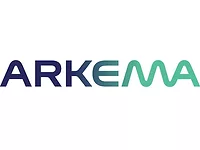Reduction of VOCs in Europe's Coatings Industry at 28 Percent
It is generally observed that several countries have made considerable effort to reduce VOCs from paint application. Reduction of VOCs in the paint and coatings industry in the time span 1990-2003 has amounted to 28 percent, though it differs greatly from country to country. There are even countries where, in the same time interval, emissions have increased.
The principal ways to reduce VOC emissions have been "good manufacturing processes," improved application efficiencies and the "paint technology route," especially waterborne, powder, high-solids solvent-based, and radiation-curable coatings or combinations of these technologies (waterborne/radcure, powder/radcure, powder/waterborne). But the penetration of these "clean" technologies varies from sector to sector. In selected sectors, the alternative was to use "secondary" solvent-abatement techniques though not without technical and financial constraints.
Further information on the 555-page report is available from Franco Busato, Irfab. Call +32 2 6573585, fax +32 2 6579021 or e-mail enquiry@irfab.com.
Looking for a reprint of this article?
From high-res PDFs to custom plaques, order your copy today!





